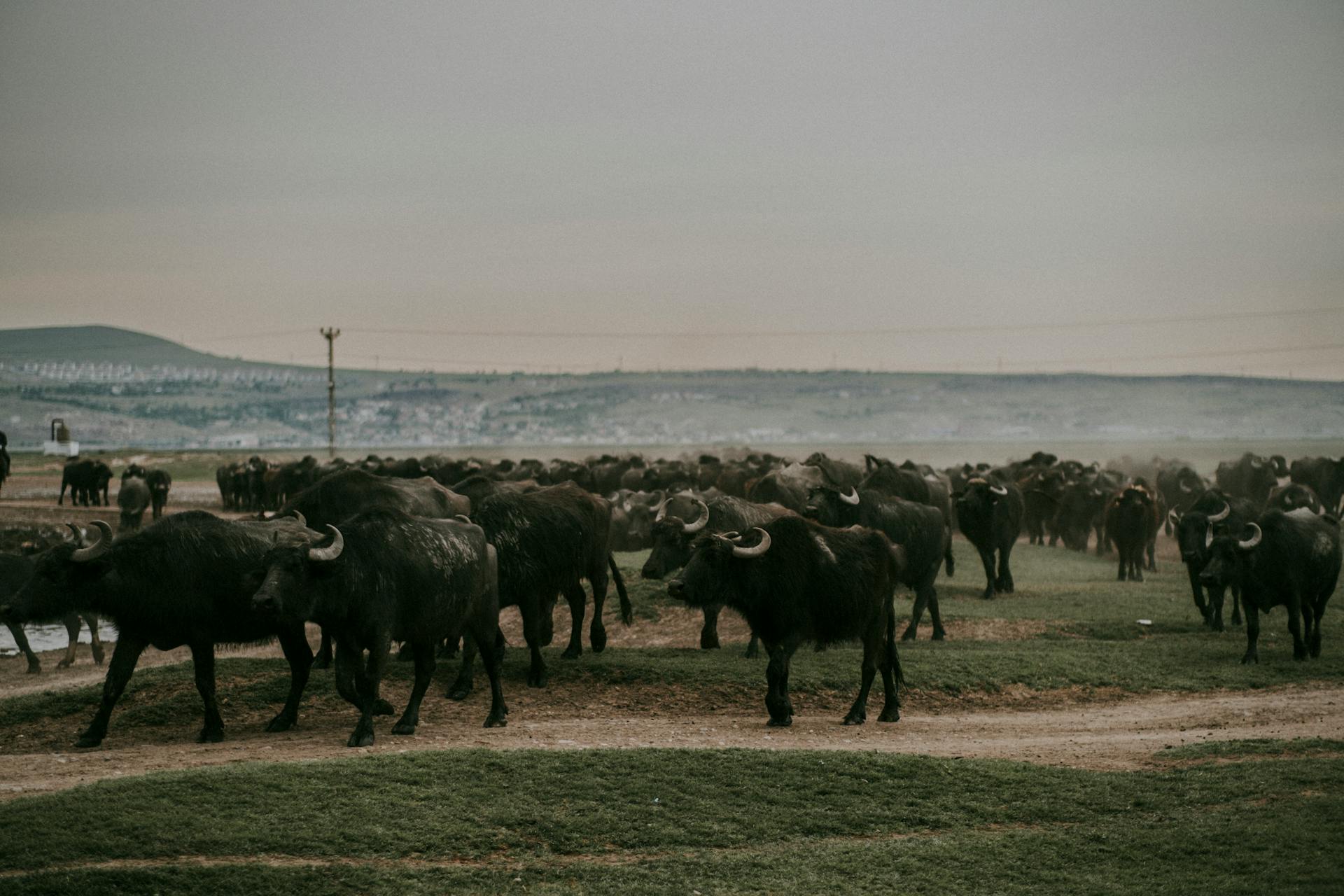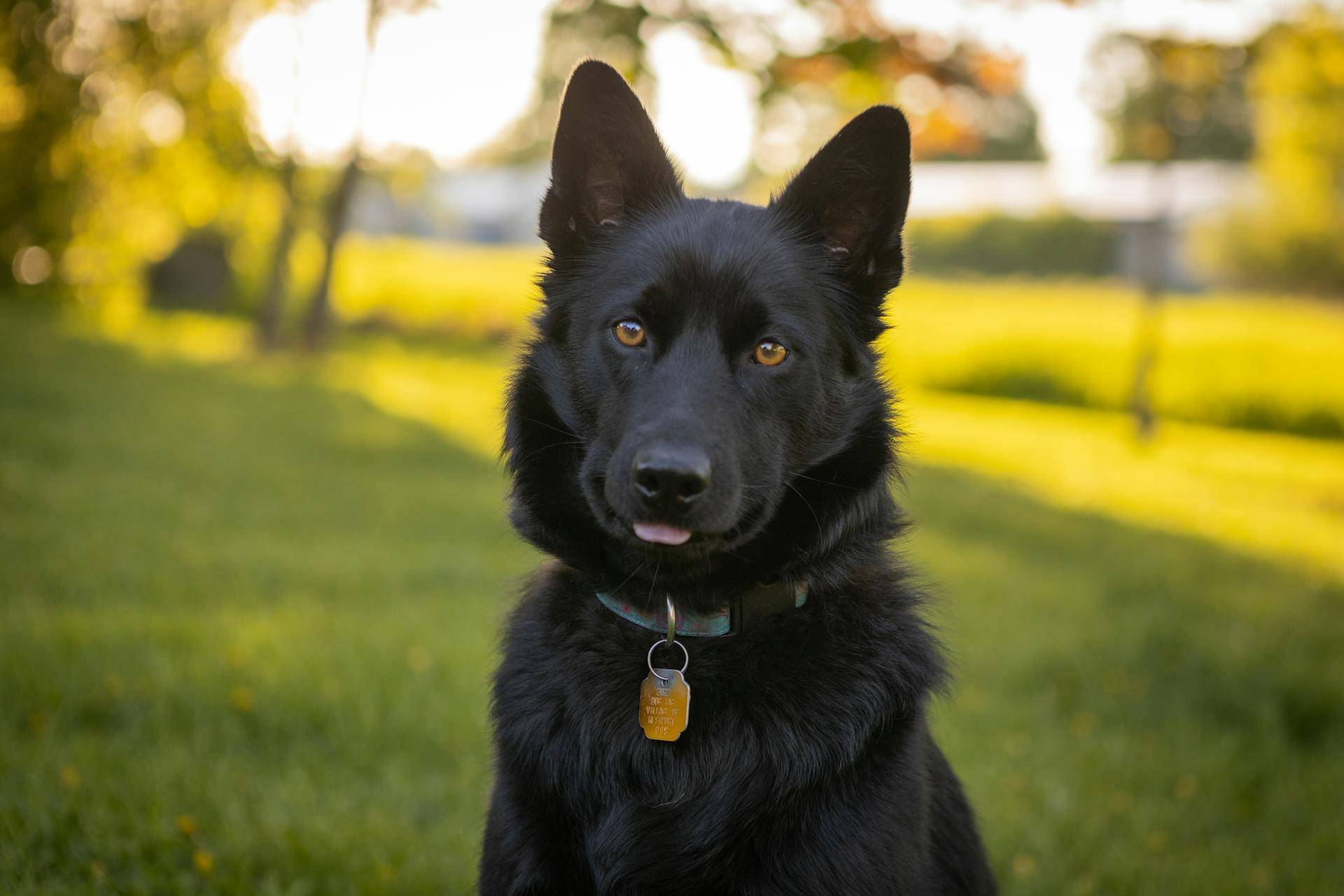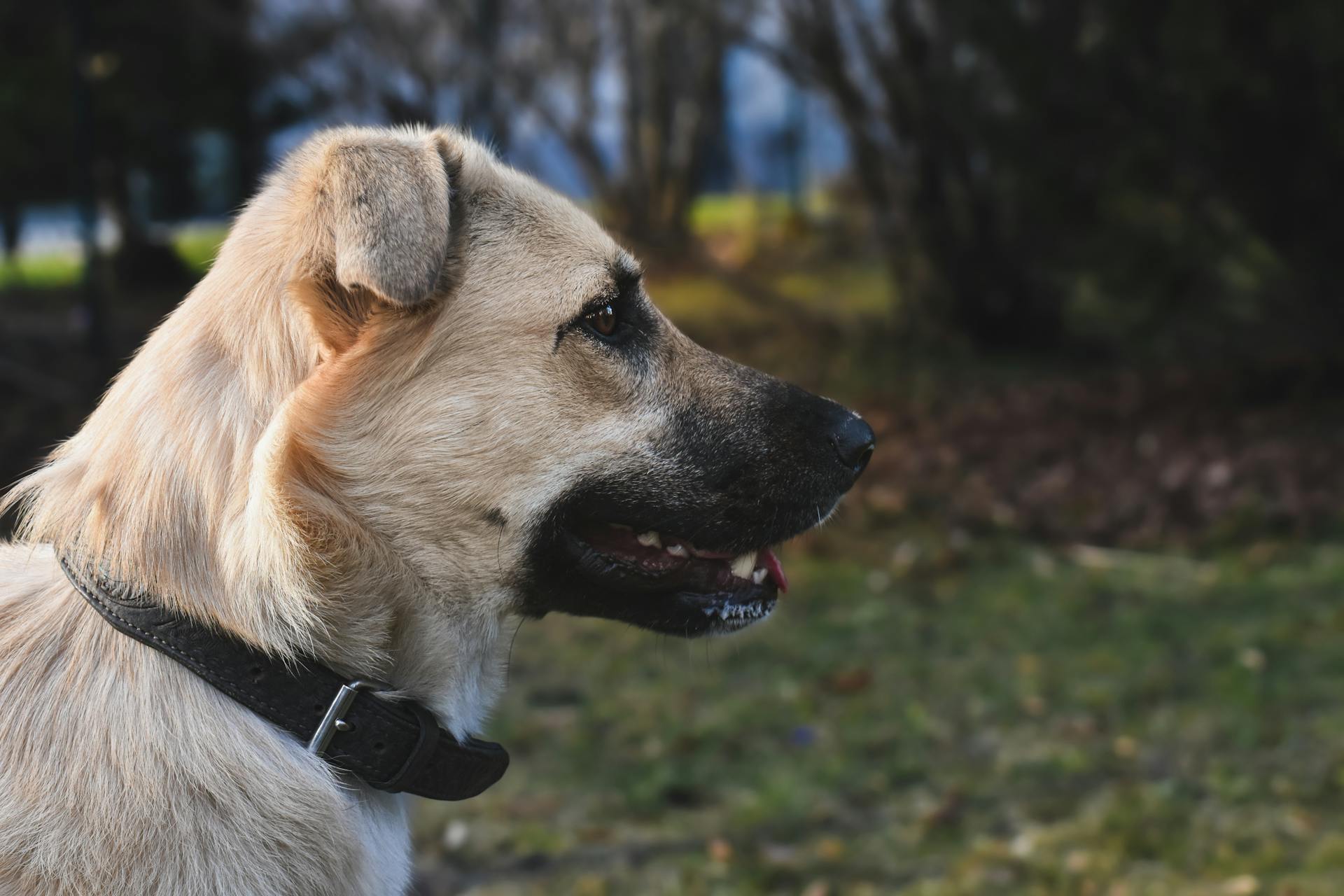
The Anatolian Karabash Dog is an ancient breed that originated in Turkey, specifically in the Anatolian region. They were bred to guard livestock and protect their owners from predators.
These dogs are known for their distinctive physical characteristics, including a short, dense coat that comes in a variety of colors, including brindle, fawn, and white. Their medium-sized build and muscular physique make them well-suited for guarding and herding.
One of the most notable features of the Anatolian Karabash Dog is their keen sense of smell and hearing, which allows them to detect potential threats from a distance.
Origin and History
The Anatolian Karabash Dog originated in Turkey, possibly from Babylonian Mastiff-type dogs. The breed has a long history, with Assyrian artefacts depicting dogs of the type dated back to 1000 BC.
The Anatolian Shepherd Dog was never considered a pet, but rather a valuable worker that needed minimal human contact and direction. They were bred to guard flocks and protect them from thieves, wolves, and other predators.
Their ability to live and work under harsh conditions was crucial, and only the finest and fittest dogs were allowed to survive and breed. This ensured that the breed remained stable and tolerant of people and village life.
Origin
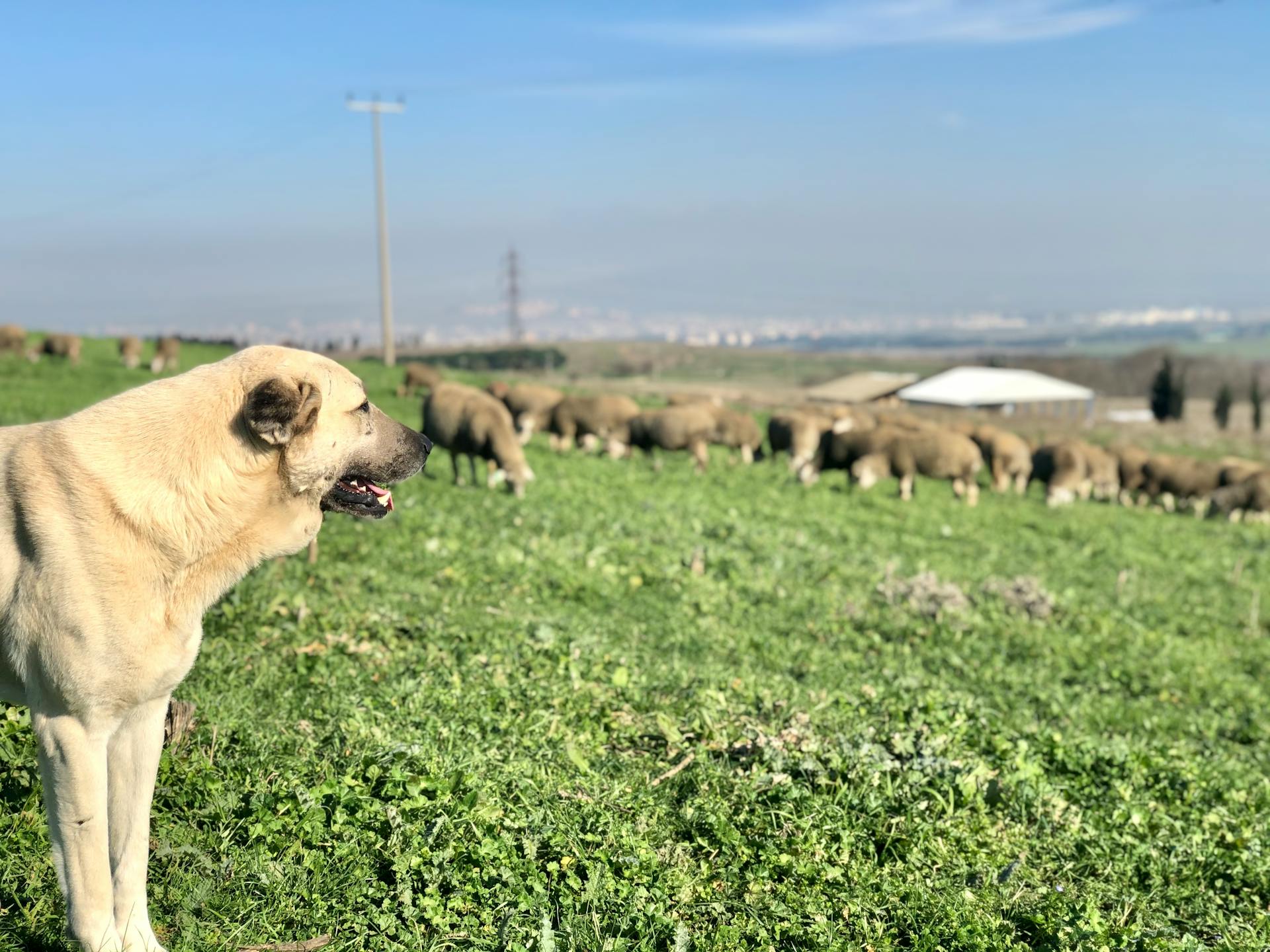
The Anatolian Shepherd Dog is an ancient breed with a rich history. It originated in Turkey, possibly from Babylonian Mastiff-type dogs.
Assyrian artefacts have dated back to 1000 BC, depicting dogs of the type, suggesting the breed may be considerably older. The breed's exact development date is uncertain.
The Anatolian Shepherd's primary task has always been to guard its master's flocks and protect them from thieves, wolves, and other predators. This role required them to be valuable workers needing minimal human contact and direction.
Only the finest and fittest were allowed to survive and breed, ensuring the ability to live and work under harsh conditions did not decline. This selective breeding also prioritized a stable temperament, as the dogs had to be tolerant of people and village life.
The preferred technique of most livestock guardians is to interrupt the stalk, chase, kill pattern of predators, warning them off and avoiding the risk of injury to themselves.
Anatolian Shepherd Dog Becomes Pure Breed
The Anatolian Shepherd Dog becomes a Pure Breed. It all started in 1965 when the first breeding pair arrived in the UK.
The original name suggested was Anatolian Karabash Dog, which was initially accepted by the Kennel Club (UK).
A few years later, another group of people stayed in the Turkish town of Kangal.
They suggested the name Kangal, which the Kennel Club (UK) later adopted.
This name was further entrenched in 1996 when a Turkish postage stamp incorrectly named Turkey's Livestock Guardian Dog the "Kangal köpegi" or Kangal.
Expand your knowledge: American Kennel Club Lancashire Heeler
Studies Within Turkey
Studies within Turkey have provided valuable insights into the Karabash breed. A PhD study conducted by Dr. Orhan Yilmaz between 2002 and 2007 involved collecting data from 41 provinces across Turkey.
The study involved a total of 735 dogs, with 432 males and 303 females. This extensive research gave us a better understanding of the breed's characteristics.
One key finding was that the Karabash dog's head should resemble that of a female lioness, like its ancestor the Central Asian Shepherd Dog. This is a fascinating connection to its heritage.
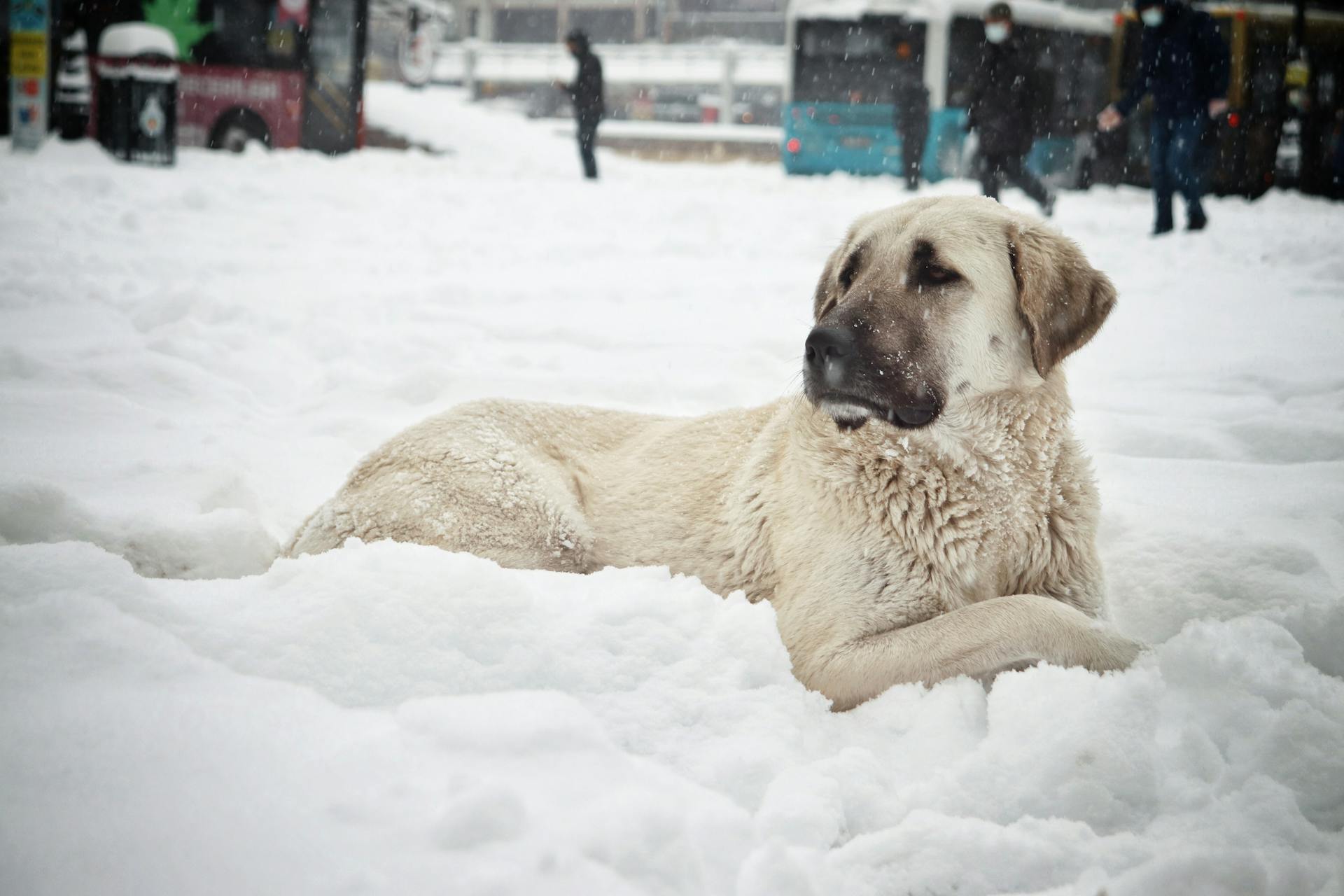
The Karabash breed has a distinctive double coat, which is uniformly short but slightly longer around the neck, forming a ruff. This unique feature is a defining characteristic of the breed.
Interestingly, the Karabash dog may have single or double hind dewclaws, similar to the Pyrenean Mountain Dog. This variation in dewclaw structure is worth noting.
The tail of the Karabash dog is often carried upwards and curled forward, although it can also hang low. This versatility in tail carriage is an interesting aspect of the breed's behavior.
The study also provided information on the Karabash breed's size. Here are the average weights and heights:
These findings provide a solid foundation for understanding the Karabash breed's characteristics and history.
Characteristics
The Anatolian Karabash dog is a large and powerful breed that carries himself with calm pride. He's an outstanding guard and watchdog who will fiercely protect his household and territory.
He's intelligent and has a strong will, which makes him a loyal companion if properly trained and socialized. However, he can be intolerant of other dogs unless very well socialized.
This dog is naturally inclined to reserve his deepest loyalty and respect for a single person, and he can be suspicious of strangers. But with proper introduction, he'll accept them, albeit with a watchful eye.
It's essential to establish clear boundaries and a defined territory for him to patrol, as he can get territorial and protective of neighboring property if not properly trained.
Character
This breed is a large and powerful dog that carries himself with calm pride. He possesses intelligence and a strong will, making him an outstanding guard and vigilant watchdog.
As a guardian, he will fiercely protect and defend his household, including people and animals, and what he perceives to be his territory. He is physically equipped to live outside in all weathers, but a comfortable shelter from the elements should always be available to him.
He is affectionate with all the family, but has an inclination to reserve his deepest loyalty and respect for a single person. This means he will likely form a strong bond with one person, but may not be as affectionate with others.
Take a look at this: Dog Names for Strong Dogs
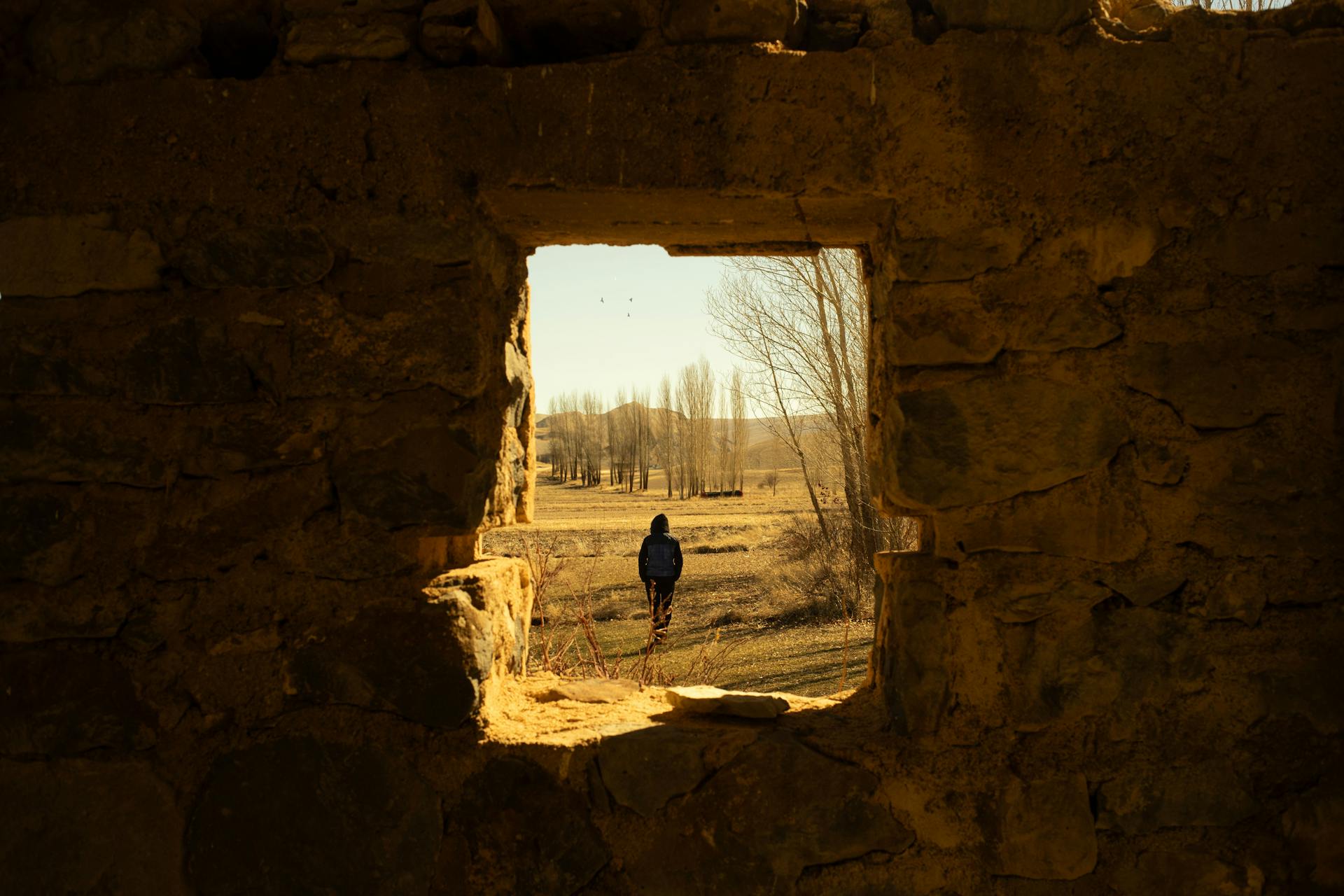
Strangers are usually regarded with suspicion, but he will accept them if properly introduced. However, he will keep them under a watchful eye and may not make friendly overtures.
It's essential to ensure that the area he will patrol is well defined, so he knows what is his territory. Failure to do so may lead him to select his own territory to protect, which could include neighboring property and involve crossing roads or facing other hazards.
He is generally good with children, but unless very well socialized, can be intolerant of other dogs. This means he may not be the best fit for families with multiple pets or children who are not old enough to understand how to interact with him gently.
The Anatolian Shepherd Dog is not suited for town and city life, as he needs space and broad vistas to survey. If you live in a busy urban area, this breed may not be the best choice for you.
General Appearance
This breed is quite the sight to behold, with a large and powerfully built physique.
Their broad strong head is a notable feature, and it's matched by their dense double coat, which is perfect for withstanding harsh weather conditions.
Coat Colour Varieties
The Karabash dog comes in different coat colours, depending on the area in Turkey they were developed. These colours are a result of their geographical adaptation.
The Boz or dun colour is common in the Karabash, often with a black mask, similar to the Akkaraman sheep. This colouring helps them blend in with the plateaus where they work.
Grizzle and ashy colours are also found in the Karabash, with a similar colour to the Boz but with black on the outer guard hairs of the top coat. The Yagiz or ashy colour has a greater density of black hairs, especially on their extremities.
The Dalkir or Brindle colour features black hairs forming bands over the Boz or dun colour, giving a striped effect. This colouring is found in a small region close to Georgia.
On a similar theme: Bernese Mountain Dog Similar Breeds
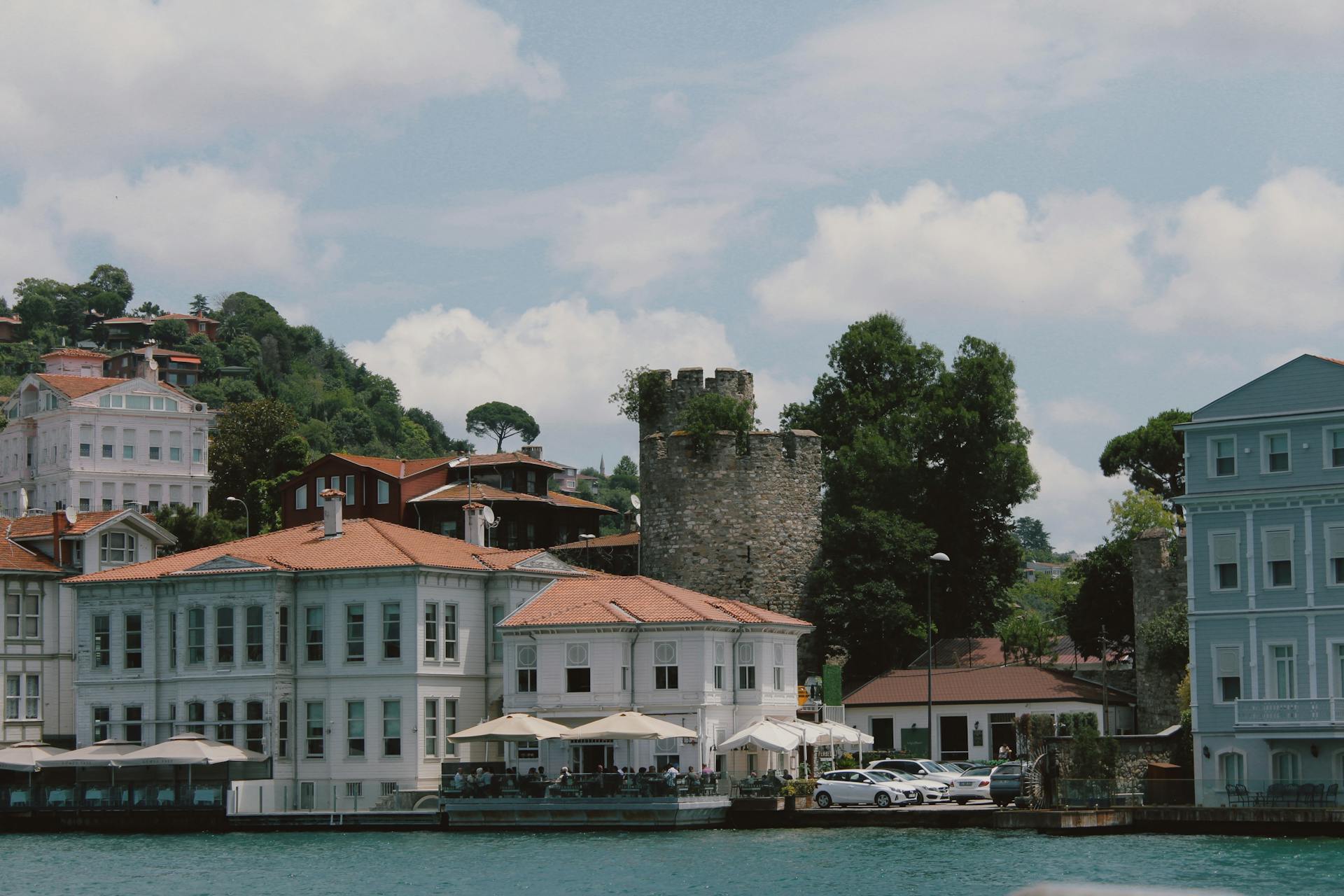
Some Karabash dogs are white, known as Akbash or white, and have a variable coat length. They are generally slightly smaller and more rapid than the Karabash, but are excellent working dogs.
The Erzurum or dark yellow to reddish colour is found in a small province and features a more finely built appearance, making them appear more noble.
Here are the different coat colour varieties of the Karabash dog:
- Boz or dun coloured
- Kircil or grizzle and Yagiz or ashy
- Dalkir or Brindle
- Akbash or white
- Erzurum or dark yellow or gold through to reddish
Training and Behavior
Training an Anatolian Karabash dog requires patience, consistency, and benign firmness.
They are intelligent but self-reliant, bred to use their own judgement and make decisions with little human interference.
Training should be based on mutual affection and respect, with a focus on rewarding good efforts and accomplishments with praise and treats.
Socialization is crucial, starting in early puppyhood and ongoing, to reduce the chance of them becoming antagonistic toward their own kind or over-protective.
This breed is naturally independent, very intelligent, confident, and proud, making them a challenge to train but also a pleasure to live with.
Explore further: All about Dogs Dog Training
Temperament
When it comes to temperament, this breed is known for being steady and bold. They're naturally independent, which can sometimes make training a bit more challenging.
Their intelligence is one of their best assets, making them confident and proud. This confidence can sometimes be misinterpreted as stubbornness.
Loyalty is a key trait in this breed, and they form strong bonds with their owners. They're affectionate and loving, but it's essential to socialize them well to avoid wariness of strangers when they mature.
Their bold nature can sometimes make them wary of strangers, especially as they grow older. This is why early socialization is crucial to help them become confident and calm in new situations.
You might like: Best Time to Breed a Female Dog
Training
Training should commence with your puppy as soon as possible, especially for a breed as large as the Anatolian.
The Anatolian is very intelligent, but also self-reliant and bred to use his own judgement, which can make training somewhat demanding.
Training sessions should be kept short and interesting to keep your puppy engaged, and his good efforts and accomplishments should be rewarded with praise and treats.
Harsh physical and verbal corrections will be met with resentment and disdain, so it's essential to use benign firmness and mutual affection and respect as the foundation of your training approach.
Socialization should start in early puppyhood and be extensive and ongoing to reduce the chance of your Anatolian becoming antagonistic toward his own kind or over-protective.
Coat and Grooming
The Anatolian Karabash dog has a thick double coat that sheds heavily, especially during shedding season. This means regular brushing is essential to prevent matting and tangling.
Their coat is made up of a soft undercoat and a harsh outer coat, which sheds heavily.
To prevent matting, they need to be brushed several times a week, ideally with a slicker brush or a pin brush.
Their coat can be a variety of colors, including red, fawn, and white, but they often have a white mask on their face.
Regular grooming also helps to reduce shedding and prevent hair from getting all over the house.
They are generally clean dogs and don't require frequent bathing, but they do need to be trimmed regularly to prevent overgrowth.
On a similar theme: German Wirehaired Pointer Shedding
Karabash Dog
The Karabash is the original Livestock Guardian Dog of Turkey, still working with nomads who move them to find sufficient food through transhumance.
These working dogs still wear spiked collars to protect their throats if it's necessary to fight predators.
For Turkish shepherds who still use the Karabash for its traditional purpose, many believe the Anatolian Shepherd Dog developed outside Turkey has become too big and cumbersome.
Karabash have the structural characteristics of animals living in wide open spaces, where there are almost no hiding places.
Both the Karabash and the predators are physically well adapted to the terrain, knowing exactly how to take advantage of it.
Both the Karabash and the predators must be quick and able to run fast to avoid physical confrontation.
People with bad intentions also have good reason to be afraid of these dogs, which can unintentionally cause real physical harm if provoked.
Frequently Asked Questions
Are Anatolian and Kangal the same?
Yes, Anatolian and Kangal are considered the same breed by many kennel clubs, including the American Kennel Club and Europe's Federation Cynologique Internationale. They are often referred to as Anatolian Shepherd or Kangal Shepherd Dog.
How much does an Anatolian dog cost?
The cost of an Anatolian dog typically ranges from $800 to $1,500. If you're considering bringing one home, learn more about the breed's needs and characteristics.
Are kangals legal in the US?
Kangal dogs are generally legal in the United States, but local regulations and insurance policies may apply. Check local breed-specific legislation and insurance requirements before bringing a Kangal home.
Sources
- https://www.breedia.com/dogs/anatolian-shepherd-dog
- https://www.akc.org/dog-breeds/anatolian-shepherd-dog/
- https://janedogs.com/anatolianatolian-shepherd-dog-kangal-or-karabashrabash-or-anatolian/
- https://www.vetwest.com.au/pet-library/anatolian-shepherd-or-karabash/
- https://www.allaboutturkey.com/dog-karabash.html
Featured Images: pexels.com
